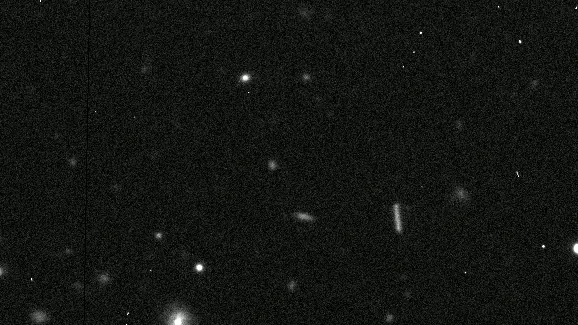
Earth's Mysterious Quasi-Moon Now Named Cardea: A Nod to the Goddess of Door Hinges!
2025-01-22
Author: Sarah
A New Name for a Celestial Body
In a delightful twist of cosmic fate, Earth's elusive quasi-moon, previously known by its technical designation 2004 GU9, has officially been named Cardea, after the Roman goddess who symbolizes door hinges. This naming explores the celestial mysteries while paying homage to ancient mythology, and the story behind this name adds a fascinating chapter to humanity's relationship with the cosmos.
The Naming Process
The name Cardea was put forth by Clay Chilcutt, a creative and enterprising astronomy student at the University of Georgia. He emerged victorious in a unique naming contest sponsored by the International Astronomical Union (IAU) in collaboration with the popular science podcast, Radiolab. The contest aimed to select a name for one of Earth's seven known quasi-moons, objects that appear to behave like moons but actually follow an orbit around the sun.
Understanding Quasi-Moons
Quasi-moons can often be misunderstood because they orbit the sun, akin to asteroids, rather than being true satellites of Earth. Kamo'oalewa is one such notable example that has sparked interest, as it is believed to have lunar origins. Cardea, however, presents a captivating snapshot of what it means to exist in a hybrid state between asteroid and moon—a liminal space just like the deity it’s named after, who represents transitions and the passage between realms.
Winner's Reflection
Chilcutt, who only learned about Cardea through a class assignment, shared his astonishment and joy upon winning the contest. "Before this assignment, Cardea was completely unknown to me," he reflected. His submission emphasized Cardea’s symbolism of change and guardianship, perfectly aligning with the unique orbital path of the quasi-moon. In his words, “This name reflects the quasi-moon's unique orbital path, embodying a celestial gateway between Earth and space.”
Other Contenders
The contest drew an impressive selection of finalists, each with rich cultural significance. The other contenders included Bakunawa, a dragon from Filipino folklore known for devouring moons during eclipses; Ehaema, a nocturnal spirit from Estonian mythology; Enkidu, the famous companion of Gilgamesh in Sumerian lore; Ótr, the shapeshifting figure from Norse mythology; Tarriaksuk, from Inuit legends of shadow beings; and Tecciztecatl, a lunar deity from Aztec culture.
Behind the Contest
The creative energy of this naming initiative was catalyzed by Latif Nasser, co-host of Radiolab, who has previously named another quasi-moon associated with Venus, creatively dubbed “Zoozve.” Nasser's quirky tale of misreading a solar system poster propelled him into the celestial naming game, and now, his momentum continues with Cardea.
Celebration of Science
“We did it! A new year and a new (quasi) moon name!” Nasser exclaimed, celebrating this cross-disciplinary endeavor. Notable figures, including actor Penn Badgley and legendary science advocate Bill Nye, participated as jury members in this unique contest, emphasizing the drive for public engagement and excitement in scientific discovery.
A Bridge Between Realms
This joyful celebration of lore and learning reminds us of the profound connections we share with our universe. It inspires curiosity and encourages individuals everywhere to gaze up towards the night sky, to ponder the endless mysteries that lie beyond. So next time you pass through a door, remember the goddess of hinges and the quasi-moon that now bears her name, a bridge between the terrestrial and the celestial!


 Brasil (PT)
Brasil (PT)
 Canada (EN)
Canada (EN)
 Chile (ES)
Chile (ES)
 Česko (CS)
Česko (CS)
 대한민국 (KO)
대한민국 (KO)
 España (ES)
España (ES)
 France (FR)
France (FR)
 Hong Kong (EN)
Hong Kong (EN)
 Italia (IT)
Italia (IT)
 日本 (JA)
日本 (JA)
 Magyarország (HU)
Magyarország (HU)
 Norge (NO)
Norge (NO)
 Polska (PL)
Polska (PL)
 Schweiz (DE)
Schweiz (DE)
 Singapore (EN)
Singapore (EN)
 Sverige (SV)
Sverige (SV)
 Suomi (FI)
Suomi (FI)
 Türkiye (TR)
Türkiye (TR)